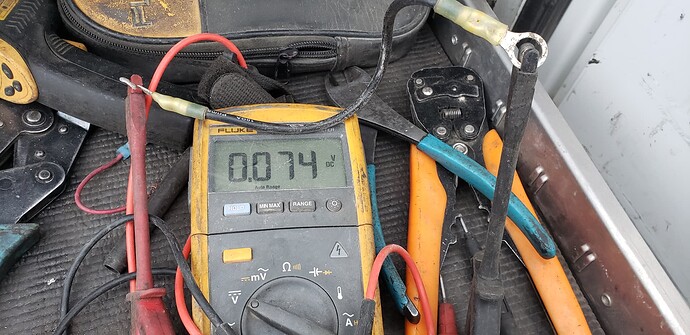This tripped me up today.
Service truck went down, as in now it is an over priced rolling toolbox. No PTO, no air compressor, no crane, no lights.
Verified no power at the service body module in the rear compartment.
Turn the PTO on and it killed the engine. Would not restart with the parking brake on - dead dash.
Open the primary circuit breaker for the service body and then the truck would stay running.
No road map. It’s 0400 at the corner of NO and WHERE Nebraska.
Follow the primary power wire from the engine compartment and it goes under then into the cab behind the seat. Great, a module that is plugged into the truck. Power in, nothing out. No blown fuses, all diodes and mini breakers OK.
Disconnect the truck from that module and now I have power in back, power in the rear module, nothing out. Test the ground and it’s hot - ah ha.
I check the connections (stud and the bolt it’s on in that compartment) and I get a brief flash of my compartment lights. I put in a ground jumper from my jumper cable connection in back and I have lights.
I pull the ground wire and try a different ground point and still nothing.
Now the weird voodoo stuff.
I ohm out the wire and I get this
Negative ohms means there’s power in that circuit. WTF?!? It’s a wire. I test my meter, verify against other 0.0 resistance items and the meter is working as normal, check the wire again and I get the same reading. Flip over to volts and I get this.
I try touching the ends of the wire to short it out. Nothing. 5 minutes later it is still giving me that reading.
Somebody can explain this, I am sure. I need to know. Right now I am blaming the Indian Burial Ground that our batch plant site is on (all manner of electrical weirdness going on for the last year). Baring some sort of verifiable scientific explanation I am going to dig a 10’ deep hole with an excavator and plant this wire in it and bury it.
Nothing special. Marked 10ga primary, not a fuseable link (on a ground?) simple heat shrink crimp eyelets on the ends.

